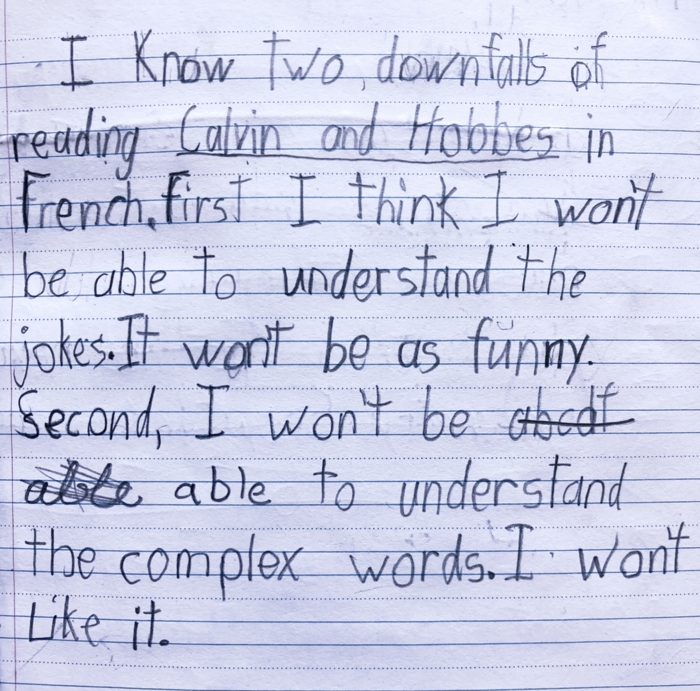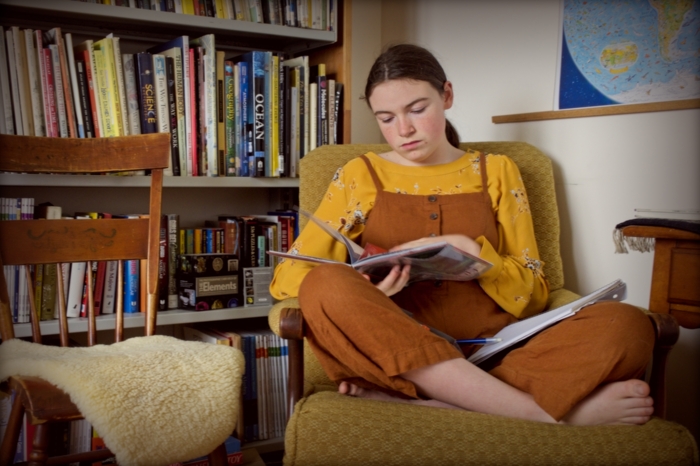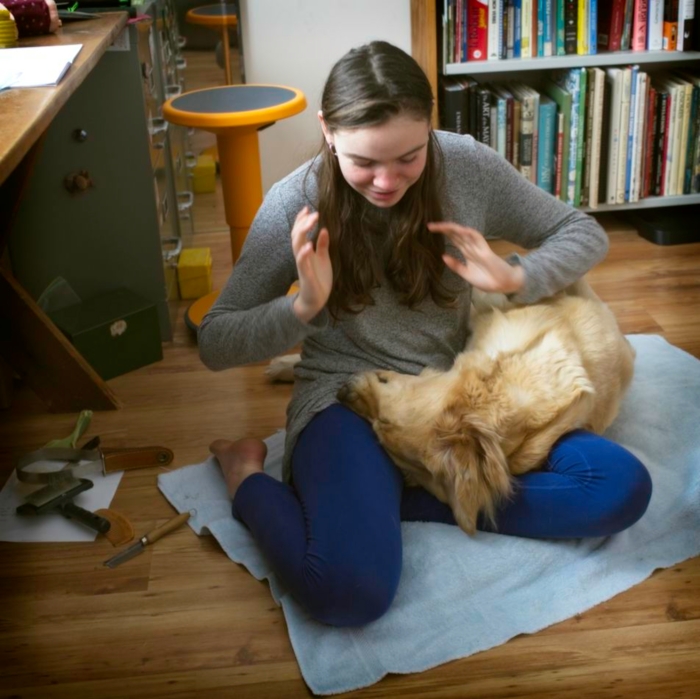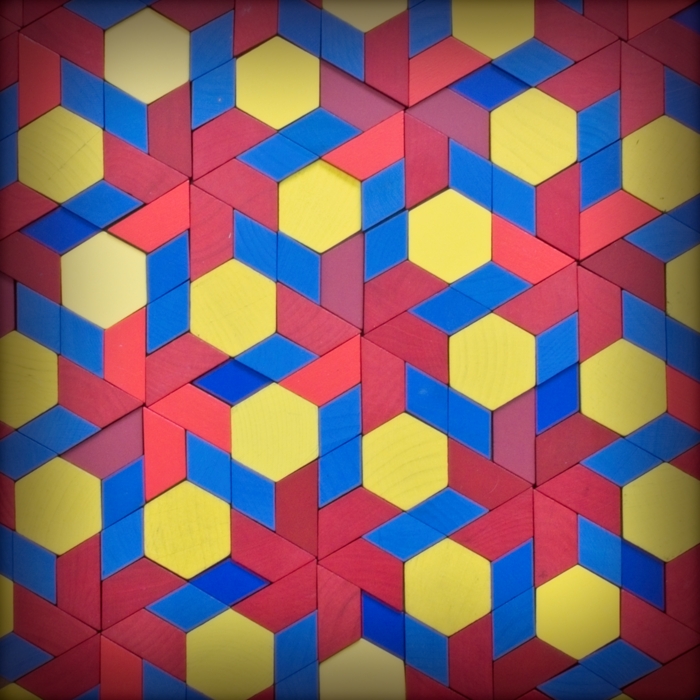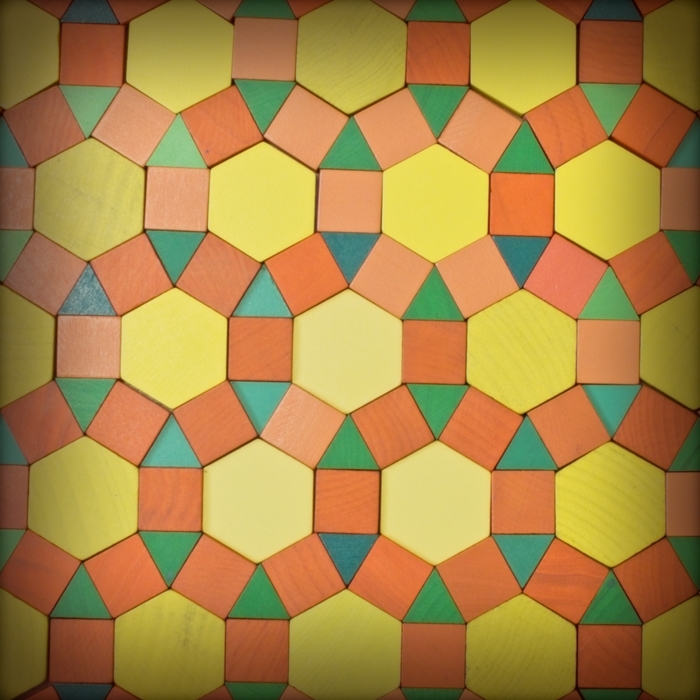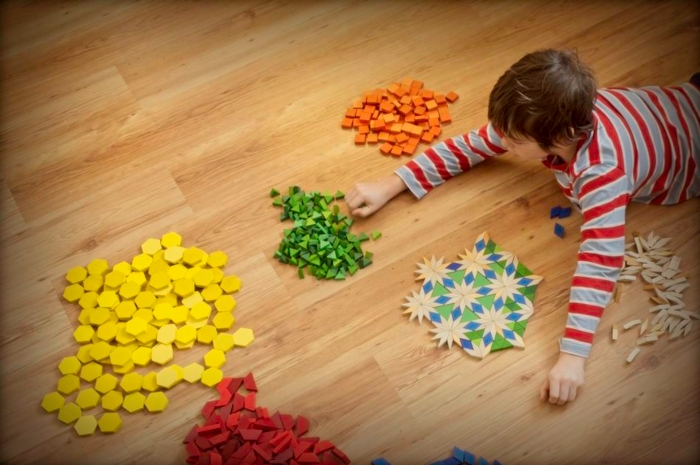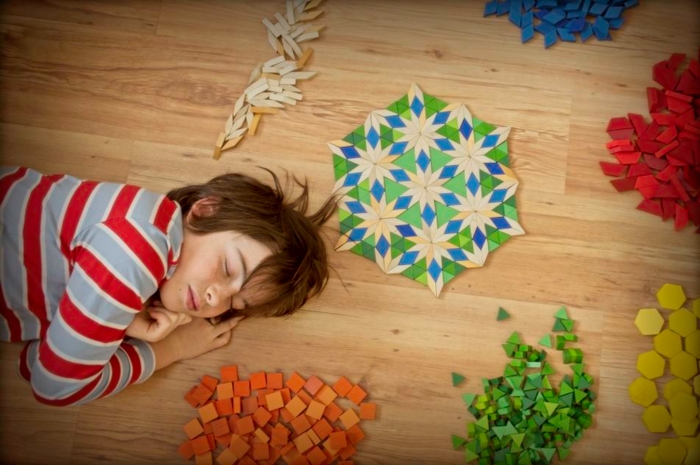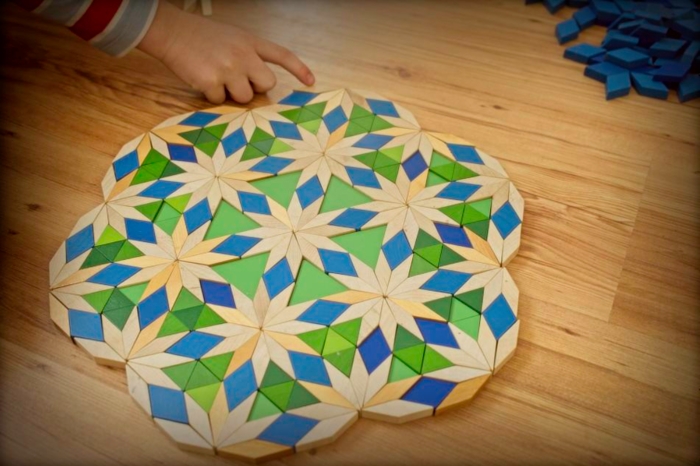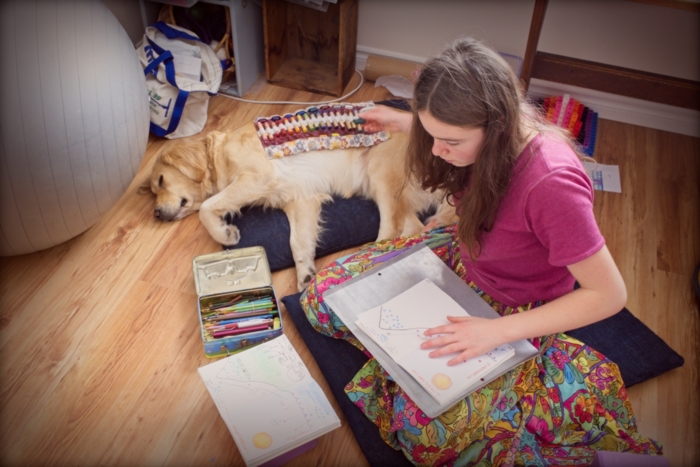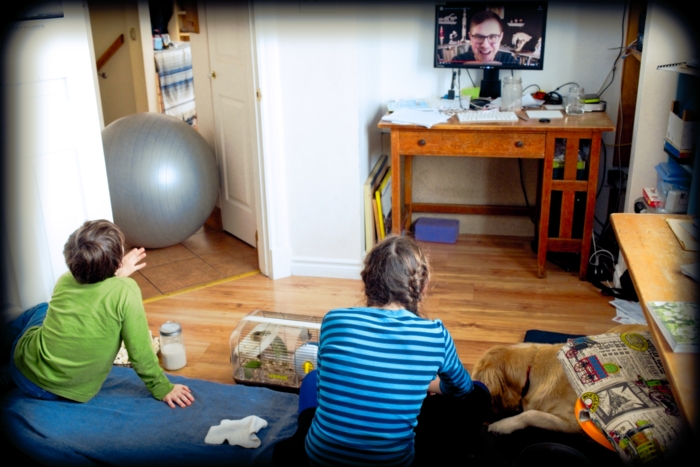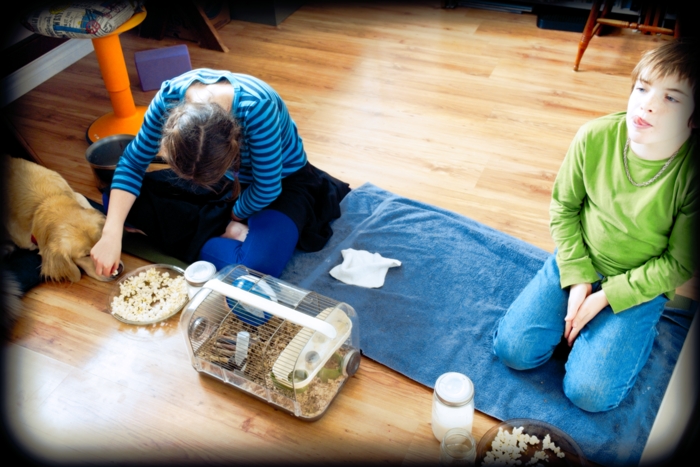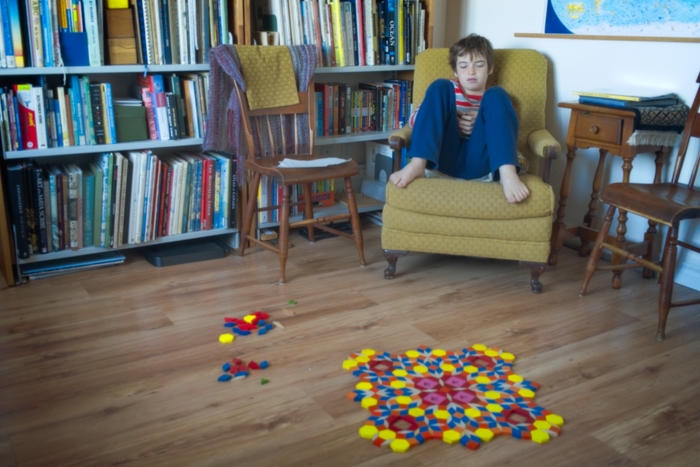While studying causes of the symmetry and structure in snowflakes, Akiva and I built a snowflake out of pattern blocks.
The non-standard shapes here (light blue quadrilaterals, pink right triangles; medium and large green equilateral triangles) are from the 21st Century Pattern Blocks and Upscale Pattern Blocks sets respectively, produced by Math for Love. Unfortunately, the sets always include about 50% old-style pattern blocks consisting of dark blue diamonds, red trapezoids, and yellow hexagons of which I literally have hundreds (thanks, Mom & Ebay). Dan Finkel (founder & director of operations) doesn’t plan on selling the new styles solo any time in the near future despite my pestering, and purchasing six boxes of each just to get enough of the new styles is out of my math manipulatives budget, so we’re out of luck. I’m particularly annoyed because I LOVE the new shapes, but 50% old shapes is just cocaine cut with talcum powder and I’m not falling for that old trick!

To learn to build your own custom snowflakes from real water, watch this video featuring Dr. Ken Libbrecht, world expert on snowflakes, designer of custom snowflakes, snowflake consultant for the movie Frozen, and snowflake photographer extraordinaire.
For to view snowflakes with greater beauty than can be made from pattern blocks of any sort, visit Ken Libberecht’s website, Snow Crystals.

